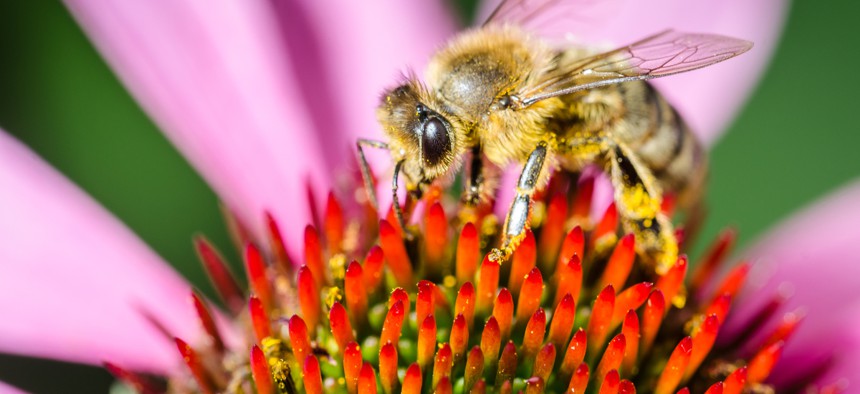Planting a Habitat for Pollinators on City Streets

Purple coneflowers are among the native plants included in the project, which will span 79 medians on a main downtown artery. Shutterstock
A pollinator protection task force in Madison, Wisconsin led to a median-planting project designed to provide a friendly environment for bees and butterflies.
Drivers along a main corridor on the east side of Madison, Wisconsin may soon notice new plants generating a buzz—among bees, butterflies and other pollinators.
The replanting project, launched this week on roadway medians on parts of downtown artery East Washington Avenue, will replace nearly a thousand non-native plants near the end of their life cycles with species found naturally in Wisconsin. The new flowers—nodding onion, butterfly weed, prairie alumroot, purple coneflower—are drought and salt-tolerant, allowing them to thrive in Wisconsin’s wildly variant climate with less water and upkeep while providing long-term habitat for pollinators.
The planting, performed by the city’s engineering division, is an offshoot of the city’s pollinator protection task force, created in 2014 by then-Mayor Paul Soglin after the Obama administration directed federal agencies to implement new strategies to improve pollinator health.
“While we appreciate the leadership of the Administration,” Soglin said in a statement then, “we must look at local options to promote the health of some of our six-legged hardest workers.”
The issue looms large in Wisconsin, where pollinators contribute an estimated $55 million to the agricultural economy, according to the state Department of Trade, Agriculture and Consumer Protection. Despite widespread recognition of their importance, pollinator populations have struggled in the Dairy State, with honeybees alone dropping by more than 60 percent in the 2014-2015 winter season.
The local task force, comprised mostly of city staff, set out to tackle the problem on a hyper-local level. The group began by asking city departments and agencies that “manage and maintain land” to describe any practices—pesticide application, mowing, species selection for seeding and planting—that might have an impact on pollinator populations.
City departments were also asked to suggest ways to enhance efforts to protect those populations, including public communication and outreach, the creation of feeding and nesting habitats and establishing outside partnerships.
The task force compiled the results of that survey in a 2015 report. The general recommendation, they wrote, was for the city to “work with government agencies, businesses, city departments, schools, farmers, organizations actively working with pollinators, and the public to increase both food resources and suitable nesting habitat for pollinator species.”
Specific recommendations included reviewing and adapting the city’s maintenance procedures to be more pollinator-friendly, partnering with outside agencies to expand programs and educating the public about the role of pollinators.
The median planting project fits into that overall scheme, said Carissa Wegner, the landscape architect for the city’s engineering division.
“They didn’t specifically inform this project, but we’ve incorporated general recommendations from the task force into my work on all engineering projects,” she said.
On top of the environmental benefits and the boost to pollinators, the planting project will also provide some eye candy for residents, officials said.
“The native plants are also expected to make the medians look dynamic and different through the growing season, as different flowers will bloom throughout the season,” the division said in a release.
Kate Elizabeth Queram is a Staff Correspondent for Route Fifty and is based in Washington, D.C.
NEXT STORY: DISA tests cloud-based internet isolation





